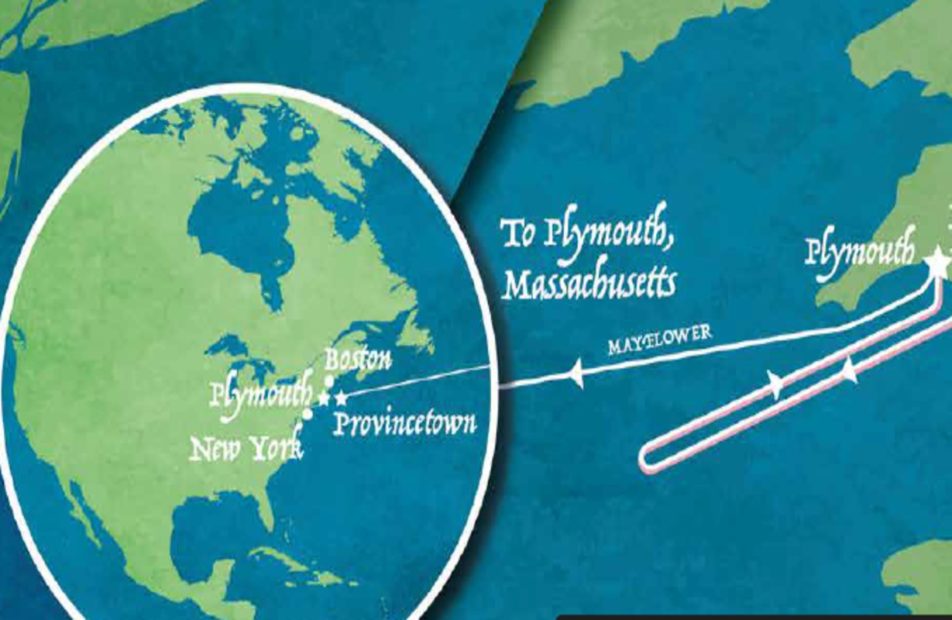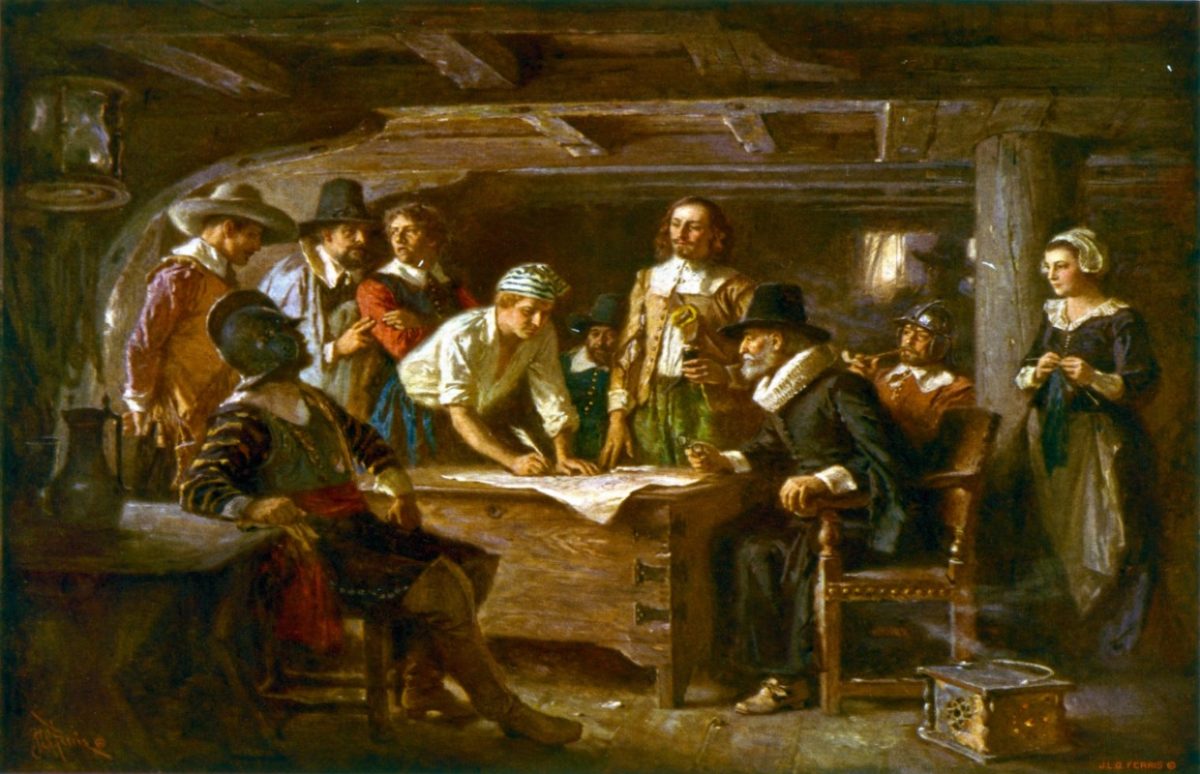On 16 September 1620, a ship set sail from Plymouth, England on a voyage that became part of the foundation myth of the U.S.A. The Mayflower carried Puritan religious dissenters called the Pilgrims and the colony they founded in Plymouth, Massachusetts has taken on mythical status.
Plymouth wasn’t the first British settlement in the future United States. Jamestown, Virginia, was settled in 1607, but it had a chequered history. At one point, the settlers came close to starvation, and at another the population was decimated by a Native American attack. So, despite the later romanticisation of the story of Pocahontas and Jamestown settlers John Rolfe and John Smith, it is the Mayflower and the Pilgrim Fathers that the U.S.A. mythologised.
A Rocky Start
Yet, the Mayflower journey got off to a rocky start too. A decade before, a group of religious dissenters from Scrooby in Nottinghamshire had fled to the Netherlands to escape religious persecution. Their form of Protestantism was much more radical than the Anglican Church created by Henry VIII in the 1530s. They opposed church hierarchy and their services and Bible were in English, so that each believer could form their own interpretation.
Although they found religious toleration in the Netherlands, the group wanted to found their own settlement. They sought funding from investors for a settlement in the New World, and eventually set off in August 1620. However, one of their two ships wasn’t seaworthy and so it was mid-September by the time they finally left from Plymouth, crowding all 102 passengers and 48 crew onto the Mayflower. This wasn’t an auspicious time of year for transatlantic travel. The ship was beset by storms and the settlers arrived in winter, the worst possible time.

The storms also altered their course, and instead of arriving in the existing colony of Virginia (which included most of the east coast from New York to Florida, on paper at least), they ended up making landfall further north on Cape Cod on 21 November. After exploring the area, they settled on Plymouth and tradition says they came ashore at Plymouth Rock on 26 December.
Their hardships weren’t over. Only half of them survived the winter, mainly on corn they stole from or traded with the local Native American tribe, the Wampanoag. Two Native Americans who spoke some English, Samoset and Squanto, helped relations with the local tribe. Squanto also helped the settlers learn how to grow local crops, fish and hunt.
The Making of Myths
It wasn’t until the 19th century that the Pilgrim Fathers, and their first Thanksgiving feast became important in the national psyche. All young American schoolchildren learn that the Pilgrims invited the Wampanoag chief Massasoit to a celebration of their first harvest, to thank the tribe for its help. No doubt some sort of harvest celebration did happen, but the image of cordial relations between the settlers and the people whose land they had appropriated is far from the truth.
![Jean Leon Gerome Ferris, “The First Thanksgiving at Plymouth, 1621” [c. 1912].](http://www.speakeasy-news.com/wp-content/uploads/2016/11/SN_thanksgivings_home-961x620.jpg)
Copyright(s) :
Library of Congress
Mayflower 400
Tag(s) : "Mayflower Compact" "Native Americans" "Pilgrims" "Puritans" "The Mayflower" "the Pilgrim Fathers" "U.S. Constitution" "U.S. culture" "U.S. history" "Wampanoag"





